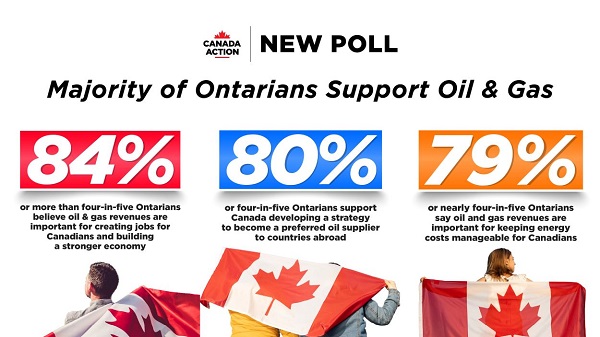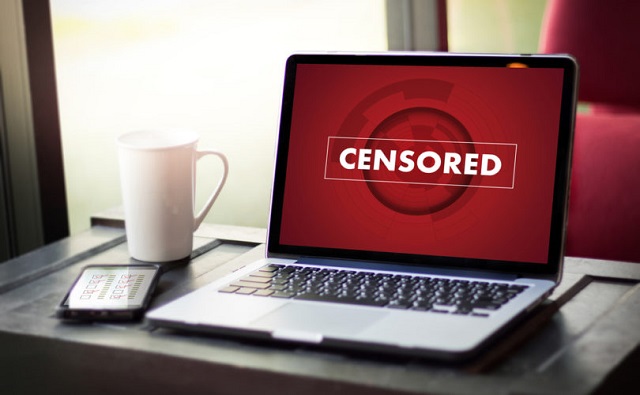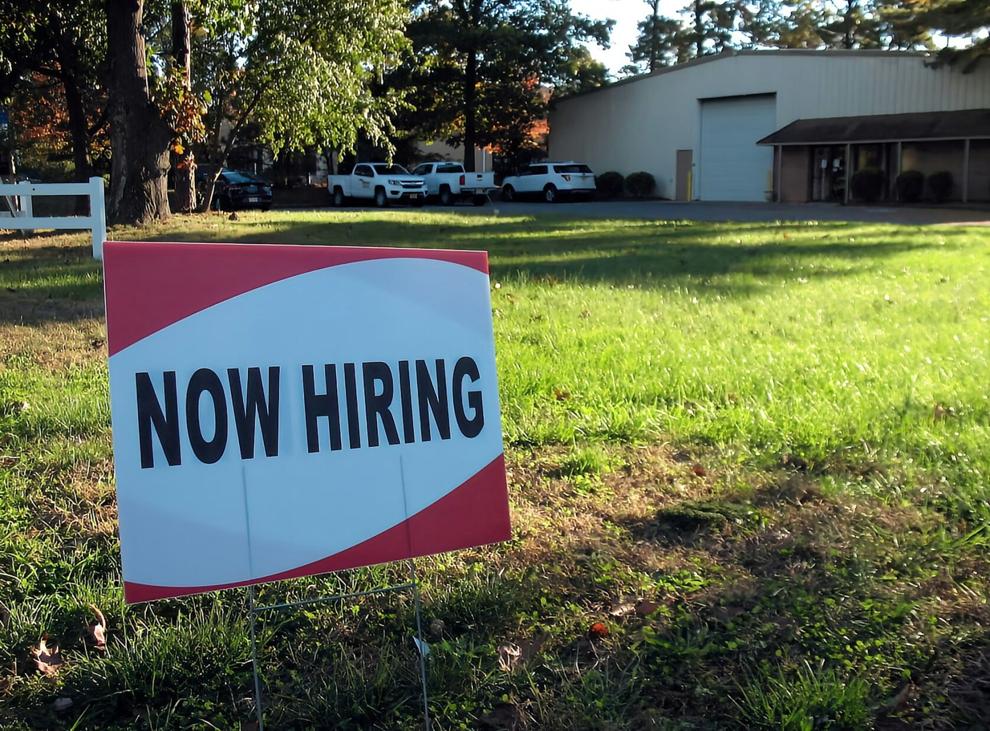Fraser Institute
Emperors of woke have no clothes and conservatives should say so
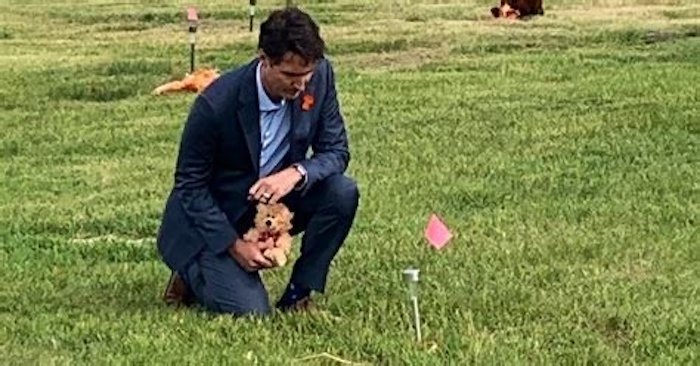
From the Frontier Centre for Public Policy
The major finding is that in Great Britain, Canada and the United States roughly one third of the population accept “woke” (progressive) views, while roughly two thirds reject those views.
However — and this is alarming — in all three countries that woke one-third controls all of the major institutions. The mainstream media, universities and civil service, for instance, are firmly controlled by the one-third woke.
Why do Conservatives go along with woke ideas, woke norms and above all woke people?
One of these days we’re going to be really sorry we didn’t stand up to this nonsense, when the proverbial little boy calls out that the emperor has no clothes. Men can be women? C’mon! You didn’t call that out at the time? Why not?
This is the question posed by Professor Eric Kaufman of England’s University of Buckingham. Kaufman, also an associate at the Ottawa-based Macdonald Laurier Institute, is a Canadian who has been living and teaching in England for the past 25 years. He has recently completed a survey on “wokeness.” (As reported here.) He was also interviewed by National Post’s rising star, Jamie Sarkonak.
Kaufman’s survey has important findings, particularly for Canada. The major finding is that in Great Britain, Canada and the United States roughly one third of the population accept “woke” (progressive) views, while roughly two thirds reject those views.
However — and this is alarming — in all three countries that woke one-third controls all of the major institutions. The mainstream media, universities and civil service, for instance, are firmly controlled by the one-third woke.
Rudi Dutschke’s long march through the institutions has arrived.
But even more concerning for Canadians should be Kaufman’s findings that pertain specifically to Canada.
That’s because he finds that while Great Britain’s Conservatives and America’s Republicans are ferociously pushing back against the extreme wokeness that is now so evident in all three countries, that is really not happening in Canada. Instead, Conservatives here have tended to knuckle under to the wokeness the Liberals so aggressively push. Any pushback has been extremely timid.
Why? How can that be? If Kaufman is right that at least two thirds of Canadians reject wokeism why is it that they have no one to represent their views?
- Is this the reason why Canada has now gained an international reputation as one of the most woke nations on earth?
- Where a Chief Justice actually feels comfortable about receiving no pushback when he claims that his Supreme Court is “the most progressive in the world”?
- And our prime minister is universally mocked as the wokest of the woke?
Does the timidity of the Conservatives on woke policies explain why the Canada we knew during the Harper and Chretien years seems to be slipping away from us?
If Kaufman’s findings are accurate, and our Conservatives are indeed submitting to woke policies — instead of representing the two thirds of Canadians who don’t want those policies — we should ask why.
Part of the reason would certainly be that the Liberals and the NDP have at every national election dishonestly attempted to use ‘socially conservative’ issues against all conservative parties — Reform, Alliance or today’s Conservative Party of Canada.
These progressive attacks were entirely spurious: conservatives have consistently stayed away from any discussion of limiting abortion access, or reversing gay marriage rights. Yet, the suggestion of a secret agenda of radical reforms is trotted out at every election, and in some eastern swing ridings appears to have been effective in keeping seats out of conservative hands.
Perhaps not surprisingly then, conservatives have consistently preferred to concentrate on bread and butter issues, and avoid the culture wars now raging.
However, with an increasingly assertive left insistent on imposing a woke agenda — even to the extent of approving a 50-year-old man sharing a locker room with teenage age girls, this preference to stay out of the fray is no longer available to them.
The example of Scott Moe’s introduction of his parents’ rights legislation is a clear sign that provincial conservatives realize that they must enter the fray. So is Alberta Premier Danielle Smith’s statement that in Alberta, sex-change operations on children under 18 years of age will not be allowed. (A decision that surprised many, given the premier’s known libertarian predilections.)
In Ontario, education minister Stephen Lecce said last year that “parents must be fully involved and fully aware of what’s happening in the life of their children.” And let’s not forget that all this started in New Brunswick, when Premier Blaine Higgs made what looks now to be a modest proposal, that children under 16 would need parental permission to change their gender at school by switching names and pronouns.
In other words, provincial politicians get it. (At last.) Federal Conservatives should go do likewise.
So what should they say?
Here are three possible responses to woke policies — on the trans issue, indigenous issues and immigration.
There is no official list of woke beliefs, but probably the most extreme is the trans issue. Woke politicians state as a fact that a man who identifies as a woman is in fact a woman. Although this claim is quite astounding to the non-woke — who know it to be untrue — the woke accept it as gospel. Prime Minister Trudeau himself famously tweeted, “A trans woman is a woman.”
If tweets were just words in the blogosphere this wouldn’t matter. However, when the nation’s leader says the words they have consequences. So, Canada now has men in women’s prisons, men in women’s sports and most alarmingly — children having body parts removed and being administered life-altering drugs — all based on this single nonsensical woke belief that men can become women by saying so.
The Conservatives should directly confront this dangerous nonsense. Obviously, they should craft their message in measured tones. But this can be easily accomplished, when the woke belief they are correcting is so obviously wrong.
Here is an example of a completely factual, scientifically accurate and measured statement that would probably win the approval of — if Kaufman is right — two thirds of Canadians: “A trans woman is not a woman. Conservatives respect trans people and respect their right to live their lives as they choose. However, that does not include their admission into women’s only places, such as crisis centres and jails or entry into women’s sports.”
The indigenous issue is Canada’s version of wokeism’s central belief — namely critical race theory — we see playing out to the south of us.
This is the woke belief that race is all important; that any differences and disparities between races is the result of systemic racism; and that governments must aggressively erase all such differences by the use of affirmative action type policies.
For the one third it has completely displaced the Martin Luther King “content of character” philosophy that has been gospel with the two thirds for more than half a century.
Canada’s woke version regards all indigenous Canadians as being completely different from other Canadians. According to this eugenics-like view anyone born to indigenous parents, or even partly indigenous parents, has some innate ecological awareness and abilities that non-indigenous people lack. They also — uniquely among every other racial or ethnic group on the planet — always tell the truth. Their claims must be taken as the truth.
Professor Hymie Rubenstein coins the term “indigenous exceptionalism” in From Truth Comes Reconciliation to describe this unusual woke belief. The most extreme example of this woke indigenous belief can be seen in the now three-year-old claim that 215 indigenous children were killed under sinister circumstances at the Kamloops Indian Residential School and then secretly buried by the priests and nuns who had supposedly killed them.
To make this claim even more bizarre it was claimed that children “as young as six” were forced to dig the graves.
Apart from a radar report showing soil disturbances that could just as easily be tree roots as graves, this baseless claim was not only taken seriously by our woke government, but actively promoted. Not only did the federal government lower flags for six months, they promised $320 million to any other indigenous communities who wanted to make similar baseless claims. Of course, many quickly did.
These “murder and secret burial” stories followed years of steadily escalating exaggeration of the harm done at residential schools. While there is no doubt that many children had bad experiences at residential schools, there had previously been a recognition that many children had received educations there that would otherwise have been denied to them. However, the stories of horror were ramped up, bit by bit, until many Canadians were ready to accept the preposterous Kamloops claim and the others that followed like clockwork after the Liberals incentivised them with the $320,000,000.
By now, most of the two thirds probably realize that they haven’t been told the truth by the Trudeau government or the mainstream media. The Conservatives need not be so afraid of being called “anti-indigenous” or “anti-reconciliation” when addressing this topic. Conservative opposition leader Pierre Pollievre made a good start when he said, “Canadians deserve to know the truth,“ and stressed the need for historical accuracy.
However, he then went on to pander embarrassingly to the woke view, using their language about the “horror” of residential school. That is not historical accuracy at all.
Here is the kind of thing Conservatives should say about residential schools:
“There is no doubt that many indigenous children were harmed at residential schools. They have been compensated and they deserve every penny of that compensation. There is also no doubt that there were some bad apples who taught and worked at the institutions. However, many indigenous children received educations that would otherwise have been denied to them. And the great majority of the priests, nuns, ministers and employees at the school were decent people who did their jobs honestly and well. That too should be recognized.”
Finally, and probably the most important issue of all — immigration. The woke view, as articulated by the PM in the earliest days of his new administration is that Canada is a post-national nation. No one seemed to understand the implications of what he was saying — possibly including the PM.
But when he tweeted out that Canada was open to anyone who wanted to come the implications started to become clear: a “post national” state doesn’t have borders… Anyone is welcome to simply walk in.
This is a fundamental belief of the woke. It is also an absolutely ruinous idea for any nation that wants to continue functioning. We see today how this woke no-borders idea is playing out in America. Our cold winters save us from the huge influxes seen there, but the millions coming to Canada are making houses unaffordable anyway and putting enormous pressure on services for Canadians and new immigrants alike.
Conservatives should not be afraid to call the woke “no borders, unrestricted immigration policy” crazy, because that is what it is.
Here’s a possible talking point they could use:
“Canada is a nation of immigrants. We have always needed immigrants, and we always will. We welcome new immigrants from all parts of the world. However, in the past few years too many have come too fast. The pressure on housing affordability and services are hurting both resident Canadians and new immigrants alike. For that reason in the first year after we take power there will be a one-year moratorium on new immigration. During that time we will both implement policies to make houses more affordable and determine what immigration numbers should be in the next decade. Canada is not a post-national state with no core identity. It is a nation with a distinct culture, an honourable history and it needs borders and a policy of controlled immigration to preserve that culture and identity.”
I think that the two thirds would welcome such an approach. And vote for it.
We don’t have to live with ignorance enthroned.
Brian Giesbrecht, retired judge, is a senior fellow at the Frontier Centre for Public Policy. First published here.
Business
The great policy challenge for governments in Canada in 2026

From the Fraser Institute
According to a recent study, living standards in Canada have declined over the past five years. And the country’s economic growth has been “ugly.” Crucially, all 10 provinces are experiencing this economic stagnation—there are no exceptions to Canada’s “ugly” growth record. In 2026, reversing this trend should be the top priority for the Carney government and provincial governments across the country.
Indeed, demographic and economic data across the country tell a remarkably similar story over the past five years. While there has been some overall economic growth in almost every province, in many cases provincial populations, fuelled by record-high levels of immigration, have grown almost as quickly. Although the total amount of economic production and income has increased from coast to coast, there are more people to divide that income between. Therefore, after we account for inflation and population growth, the data show Canadians are not better off than they were before.
Let’s dive into the numbers (adjusted for inflation) for each province. In British Columbia, the economy has grown by 13.7 per cent over the past five years but the population has grown by 11.0 per cent, which means the vast majority of the increase in the size of the economy is likely due to population growth—not improvements in productivity or living standards. In fact, per-person GDP, a key indicator of living standards, averaged only 0.5 per cent per year over the last five years, which is a miserable result by historic standards.
A similar story holds in other provinces. Prince Edward Island, Nova Scotia, Quebec and Saskatchewan all experienced some economic growth over the past five years but their populations grew at almost exactly the same rate. As a result, living standards have barely budged. In the remaining provinces (Newfoundland and Labrador, New Brunswick, Ontario, Manitoba and Alberta), population growth has outstripped economic growth, which means that even though the economy grew, living standards actually declined.
This coast-to-coast stagnation of living standards is unique in Canadian history. Historically, there’s usually variation in economic performance across the country—when one region struggles, better performance elsewhere helps drive national economic growth. For example, in the early 2010s while the Ontario and Quebec economies recovered slowly from the 2008/09 recession, Alberta and other resource-rich provinces experienced much stronger growth. Over the past five years, however, there has not been a “good news” story anywhere in the country when it comes to per-person economic growth and living standards.
In reality, Canada’s recent record-high levels of immigration and population growth have helped mask the country’s economic weakness. With more people to buy and sell goods and services, the overall economy is growing but living standards have barely budged. To craft policies to help raise living standards for Canadian families, policymakers in Ottawa and every provincial capital should remove regulatory barriers, reduce taxes and responsibly manage government finances. This is the great policy challenge for governments across the country in 2026 and beyond.
Business
Dark clouds loom over Canada’s economy in 2026
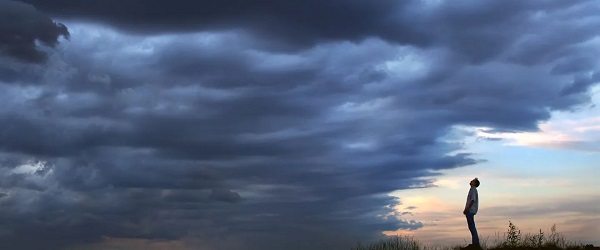
From the Fraser Institute
The dawn of a new year is an opportune time to ponder the recent performance of Canada’s $3.4 trillion economy. And the overall picture is not exactly cheerful.
Since the start of 2025, our principal trading partner has been ruled by a president who seems determined to unravel the post-war global economic and security order that provided a stable and reassuring backdrop for smaller countries such as Canada. Whether the Canada-U.S.-Mexico trade agreement (that President Trump himself pushed for) will even survive is unclear, underscoring the uncertainty that continues to weigh on business investment in Canada.
At the same time, Europe—representing one-fifth of the global economy—remains sluggish, thanks to Russia’s relentless war of choice against Ukraine, high energy costs across much of the region, and the bloc’s waning competitiveness. The huge Chinese economy has also lost a step. None of this is good for Canada.
Yet despite a difficult external environment, Canada’s economy has been surprisingly resilient. Gross domestic product (GDP) is projected to grow by 1.7 per cent (after inflation) this year. The main reason is continued gains in consumer spending, which accounts for more than three-fifths of all economic activity. After stripping out inflation, money spent by Canadians on goods and services is set to climb by 2.2 per cent in 2025, matching last year’s pace. Solid consumer spending has helped offset the impact of dwindling exports, sluggish business investment and—since 2023—lacklustre housing markets.
Another reason why we have avoided a sharper economic downturn is that the Trump administration has, so far, exempted most of Canada’s southbound exports from the president’s tariff barrage. This has partially cushioned the decline in Canada’s exports—particularly outside of the steel, aluminum, lumber and auto sectors, where steep U.S. tariffs are in effect. While exports will be lower in 2025 than the year before, the fall is less dramatic than analysts expected 6 to 8 months ago.
Although Canada’s economy grew in 2025, the job market lost steam. Employment growth has softened and the unemployment rate has ticked higher—it’s on track to average almost 7 per cent this year, up from 5.4 per cent two years ago. Unemployment among young people has skyrocketed. With the economy showing little momentum, employment growth will remain muted next year.
Unfortunately, there’s nothing positive to report on the investment front. Adjusted for inflation, private-sector capital spending has been on a downward trajectory for the last decade—a long-term trend that can’t be explained by Trump’s tariffs. Canada has underperformed both the United States and several other advanced economies in the amount of investment per employee. The investment gap with the U.S. has widened steadily since 2014. This means Canadian workers have fewer and less up-to-date tools, equipment and technology to help them produce goods and services compared to their counterparts in the U.S. (and many other countries). As a result, productivity growth in Canada has been lackluster, narrowing the scope for wage increases.
Preliminary data indicate that both overall non-residential investment and business capital spending on machinery, equipment and advanced technology products will be down again in 2025. Getting clarity on the future of the Canada-U.S. trade relationship will be key to improving the business environment for private-sector investment. Tax and regulatory policy changes that make Canada a more attractive choice for companies looking to invest and grow are also necessary. This is where government policymakers should direct their attention in 2026.
-

 Business2 days ago
Business2 days agoDark clouds loom over Canada’s economy in 2026
-

 Business2 days ago
Business2 days agoThe Real Reason Canada’s Health Care System Is Failing
-

 Business2 days ago
Business2 days agoFederal funds FROZEN after massive fraud uncovered: Trump cuts off Minnesota child care money
-

 Addictions2 days ago
Addictions2 days agoCoffee, Nicotine, and the Politics of Acceptable Addiction
-

 Opinion2 days ago
Opinion2 days agoGlobally, 2025 had one of the lowest annual death rates from extreme weather in history
-

 International22 hours ago
International22 hours agoTrump confirms first American land strike against Venezuelan narco networks
-
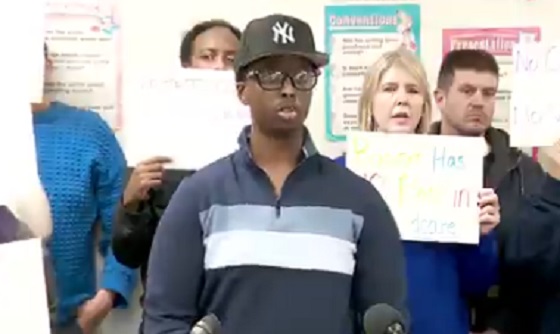
 Business22 hours ago
Business22 hours agoHow convenient: Minnesota day care reports break-in, records gone
-

 Business22 hours ago
Business22 hours agoThe great policy challenge for governments in Canada in 2026





